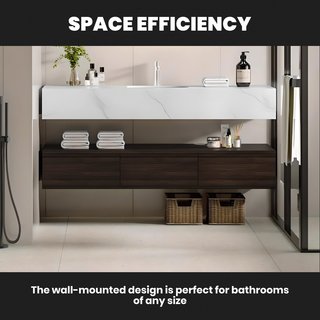Illuminating Your home: The Ultimate Self-help guide to Home Lighting
Wiki Article
Lighting is an essential yet often overlooked element of interior design. The best lighting not merely enhances the aesthetic appeal of your home but also influences the functionality and ambiance of each room. From setting the climate to improving visibility, understanding how to effectively use lighting can adjust your living space. Here’s a thorough guide to cheap online shopping that will help you create a well-lit, inviting home.
Knowing the Basics of Home Lighting
Before diving into specific lighting solutions, it is critical to understand the three main forms of lighting:

Ambient Lighting: Here is the primary light source in a room, providing general illumination. It ensures the area is uniformly lit and often comes from ceiling fixtures, chandeliers, or recessed lighting.
Task Lighting: This type of lighting targets specific locations where detailed activities occur, such as reading, cooking, or working. Examples include desk lamps, under-cabinet lights, and vanity lights.
Accent Lighting: Accent lighting highlights particular features in a room, such as artwork, architectural elements, or decorative objects. It adds drama and magnificence to the space, often through spotlights, track lighting, or wall-mounted fixtures.
Room-by-Room Lighting Tips
Each room or space has unique lighting needs according to its function and style. Here are some tailored tips for various spaces:
Family room
The living room can be a multifunctional space used for relaxing, entertaining, and quite often working. Layered lighting is most effective here:
Ambient Lighting: Use ceiling fixtures like chandeliers or recessed lights for overall illumination.
Task Lighting: Lights and lighting near seating areas provide focused light to read by or working.
Accent Lighting: Highlight artwork or architectural features with spotlights or wall sconces. Dimmer switches are ideal for adjusting light levels to accommodate different activities and moods.
Kitchen
Kitchens require bright, functional lighting in order to smoke and food preparation, but they can also benefit from ambient and accent lighting for any cozy atmosphere.
Ambient Lighting: Recessed lighting or even a central ceiling fixture ensures the kitchen is well-lit.
Task Lighting: Under-cabinet lights illuminate countertops and workspaces. Pendant lights within the island or diner provide focused task lighting.
Accent Lighting: Toe kick lights, in-cabinet lights, or above-cabinet lighting put in a stylish touch and can serve as night lighting.
Bedroom
The bedroom is a host to rest and relaxation, requiring an account balance of ambient, task, and accent lighting.
Ambient Lighting: Ceiling fixtures or recessed lighting provide general illumination.
Task Lighting: Bedside lamps or wall-mounted reading lighting is essential for reading or another nighttime activities.
Accent Lighting: Soft, indirect lighting such as LED strips behind the headboard or under furniture results in a soothing atmosphere.
Bathroom
Effective bathroom lighting combines functionality with comfort, ensuring visibility for grooming tasks while making a relaxing environment.
Ambient Lighting: Ceiling-mounted fixtures or recessed lights provide overall illumination.
Task Lighting: Vanity lights around mirrors eliminate shadows, making tasks like shaving or makeup application easier. Consider sconces on either side of the mirror for even lighting.
Accent Lighting: Small Leds or strip lights around the bathtub or shower can also add a luxurious touch.
Office at home
A well-lit home business office boosts productivity and reduces eye strain.
Ambient Lighting: Ceiling fixtures or recessed lights provide general illumination.
Task Lighting: A good desk lamp with adjustable brightness is vital for focused work.
Accent Lighting: Shelving or cabinet lighting can also add a decorative element while improving visibility.
Selecting the best Light Bulbs
Lights play a significant role in the quality and efficiency of your house lighting. Below are a few factors to consider:
Brightness: Measured in lumens, the brightness level should match the room's function. As an example, a kitchen or home office may require brighter light compared to a bedroom.
Color Temperature: Measured in Kelvins (K), color temperature affects the ambiance. Warm light (2700K-3000K) creates a cozy atmosphere, while cool light (3500K-5000K) is fantastic for task-oriented spaces.
Energy-efficiency: LED bulbs are energy-efficient, long-lasting, are available in a variety of brightness levels and color temperatures. They may be an eco-friendly choice in comparison to incandescent or fluorescent bulbs.
Smart Lighting Solutions
Smart lighting systems offer convenience, energy savings, that has been enhanced control over your home’s lighting. Features include:
Remote Control: Adjust lights via smartphone apps or voice commands using smart assistants like Alexa or Google Home.
Scheduling: Automate lighting schedules to turn lights on or off at particular times, enhancing security and saving energy.
Custom Scenes: Create lighting scenes that adjust multiple lights to precise settings for different activities, for example reading, dining, or movie-watching.
Effective home lights are about not just illuminating a space; it’s about creating an environment that enhances comfort, functionality, and elegance. By comprehending the different types of lighting and ways to apply them in each room, you are able to transform your home in to a well-lit haven. Whether you’re using basic fixtures or advanced smart lighting systems, the right lighting could make all the difference in the method that you experience your home.